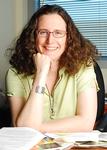Cited By
View all- Ryoo JBlunt T(2024)“Show Them the Playbook That These Companies Are Using”: Youth Voices about Why Computer Science Education Must Center Discussions of Power, Ethics, and Culturally Responsive ComputingACM Transactions on Computing Education10.1145/366064524:3(1-21)Online publication date: 23-Apr-2024
- Aslan UHorn MWilensky U(2024)Why are some students “not into” computational thinking activities embedded within high school science units? Key takeaways from a microethnographic discourse analysis studyScience Education10.1002/sce.21850108:3(929-956)Online publication date: 21-Feb-2024
- CEHDİOĞLU TKILIÇER K(2023)The Effect of Producing with IT Project Pilot Scheme on 5th-Grade Students' Problem-Solving Skills and Attitudes towards CodingBilişimle Üretim Pilot Uygulamasının 5. Sınıf Öğrencilerinin Problem Çözme Becerileri ve Kodlamaya Yönelik Tutumları Üzerindeki EtkisiUluslararası Türk Eğitim Bilimleri Dergisi10.46778/goputeb.12163372023:20(126-161)Online publication date: 29-Mar-2023
- Show More Cited By



